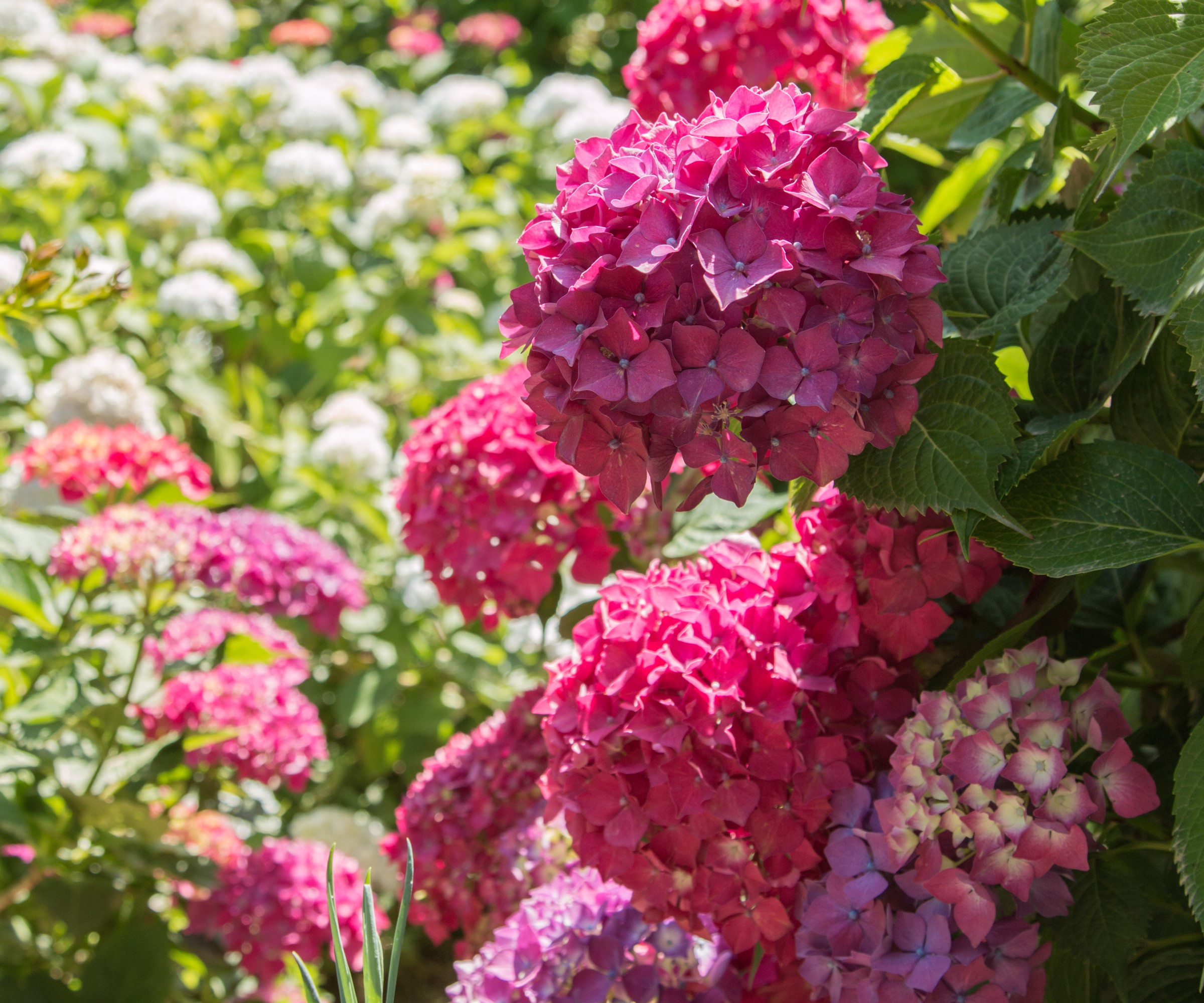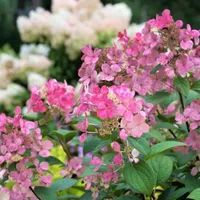Are hydrangeas drought tolerant? Expert advice on whether they can thrive in dry conditions
Hydrangeas are plants that like moisture, though some varieties are more resilient to dry conditions than others


Hydrangeas are a fantastic shrub for any garden, but they need to be planted in the right place to produce their beautiful blooms year-after-year. They are not highly drought-tolerant plants as their ideal spot is dappled shade with moist but well-drained soil
Some types of hydrangea are more tolerant of dry conditions than others, however, all will need watering and this becomes more important in hot and dry weather, when they can start to wilt.
When growing hydrangeas it is likely that shrubs need to be watered at least once a week, or more in periods of very hot and dry weather and if they are in pots. Even the most drought tolerant varieties will require regular monitoring for signs of heat stress, and regular watering.

Hydrangeas want sun to bloom, but do want to grow in dappled shade
Are hydrangeas drought tolerant?
Hydrangeas are not regarded as highly drought tolerant. Instead they are plants that prefer lots of moisture and can easily get stressed in extended dry conditions. This can potentially make hydrangeas difficult to keep happy in dry gardens, but there are variations among the different types as to how much dry they can withstand.
Stress due to a lack of moisture can show on hydrangeas in the form of wilting leaves and blooms, and it can lead to defoliation in extreme cases. Hydrangeas prefer it cool and a semi-shady spot in the garden but do want some sun, as lack of sun can be a reason for hydrangeas not blooming.
During dry periods they will need regular watering, at least once a week but up to every couple of days in periods of drought. Tony O’Neill, experienced gardener and author at Simplify Gardening, recommends that in dry weather hydrangeas need to be given ‘around an inch of water’ at least once a week.
He adds: ‘However, this is the bare minimum and most hydrangeas will require more frequent watering to thrive, especially in regions with hot, dry summers. Observing the plants for signs of water stress, such as wilting leaves, is crucial to ensure their health and vitality.’
Design expertise in your inbox – from inspiring decorating ideas and beautiful celebrity homes to practical gardening advice and shopping round-ups.
Any shrubs, including hydrangeas, will become more drought tolerant once they are well-established and put out strong root systems. That means if you are planting hydrangeas or transplanting hydrangeas they will need more regular watering for their first year in the ground. If you are growing hydrangeas in pots, they will need checking regularly and potentially daily watering during hot summer days.

Tony O'Neill is a passionate gardener and the author of Composting Masterclass, available at Amazon, and Your First Vegetable Garden. He runs the website Simplify Gardening along with a successful YouTube channel to educate people on various gardening topics.

Hydrangeas will need regular watering during dry spells
What are the most drought-tolerant hydrangeas?
Some hydrangeas are more drought tolerant than others, so it is advisable to do some research into the types if you are looking for a hydrangea to tolerate dry conditions.
There are many different types of hydrangeas to choose from for your backyard ideas, with flowers of different shapes ranging from rounded clusters of mophead types to more conical blooms. While hydrangeas can be some of the best shrubs for shade, some of the types are more capable of surviving dry periods than others.
Stephen Sullivan, the editor at Plant Native, says: ‘Among the different types of hydrangeas, the Oakleaf hydrangea (Hydrangea quercifolia) and the Panicle hydrangea (Hydrangea paniculata) tend to be more resilient in dry conditions compared to the Bigleaf hydrangea (Hydrangea macrophylla).
‘The Oakleaf hydrangea, in particular, has thicker leaves that help reduce water loss and allows it to withstand drier periods.’
There are some cultivars of Hydrangea paniculata that are identified specifically as drought tolerant. One fantastic example is the variety ‘Little Quick Fire’.
Little Quick Fire Hydrangea paniculata | Available at Nature Hills
The variety 'Little Quick Fire' is regarded as a drought-tolerant type of hydrangea. It produces 8-inch long panicles of cone-shaped blooms that change color from white to pink.
FAQs
Will my hydrangeas survive the drought?
Hydrangeas can survive drought conditions but will need regular watering. In long periods of hot and dry weather, that could mean watering hydrangeas as often as once a day.
During periods of drought, it will be recently planted hydrangeas, young shrubs, and hydrangeas in pots that are going to be at the highest risk, but all hydrangeas are likely to suffer.
A hydrangea may show the signs of water stress, such as wilting leaves, however Annette Hird from Easy Urban Gardens claims the symptoms can be reversed through fast action.
She says: ‘In the heat of summer when there's been no rain, hydrangeas do need regular watering. They will actually wilt when they're in need of a drink but will usually recover once watered.’
Why are my hydrangeas wilting in the heat?
If your hydrangeas are wilting it can often be the result of too much sun and not enough water. Check the moisture level in the soil either using your fingers or a soil moisture meter, if the soil feels dry a few inches down then give the hydrangea a good deep water.
It may be a case that your hydrangea is planted in full sun rather than the partial shade that it wants to thrive in. Excess sun and heat can cause the plant to quickly lose water and start wilting.
There are hydrangea diseases that can cause foliage to wilt, including bacterial wilt that can start showing as wilting leaves and flowers before spreading quickly through the shrub. Unfortunately there is no cure for bacterial wilt and affected hydrangea are best removed and destroyed.
If you are looking for drought-tolerant planting ideas or inspiration for planning a dry garden, then hydrangeas are likely to not fit the bill. They are not very drought tolerant and will require regular watering. There are many other drought-tolerant shrubs that can thrive in the dry and would be far easier to maintain in those conditions than hydrangeas.

Drew has worked as a writer since 2008 and was also a professional gardener for many years. As a trained horticulturist, he worked in prestigious historic gardens, including Hanbury Hall and the world-famous Hidcote Manor Garden. He also spent time as a specialist kitchen gardener at Soho Farmhouse and Netherby Hall, where he grew vegetables, fruit, herbs, and cut flowers for restaurants. Drew has written for numerous print and online publications and is an allotment holder and garden blogger. He is shortlisted for the Digital Gardening Writer of the Year at the 2025 Garden Media Guild Awards.
